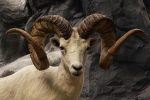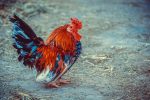Forms of Farm Animals and Their Uses for JSS 1
Lesson Plan: Forms of Farm Animals Based on Functions and Uses
Subject: Agricultural Science
Class: JSS 1 (Year 7)
Term: Second Term
Week: 8
Age: 10–12 years
Topic: Forms of Farm Animals Based on Functions, Uses, or Food Supply
Sub-topic:
- Farm Animals
- Characteristics of Cattle, Sheep, Goat, and Pig
- Breeds of Farm Animals
Duration: 40 Minutes
Behavioural Objectives:
By the end of the lesson, students should be able to:
- Identify five farm animals raised in Nigeria.
- State four characteristics each of (i) Cattle and (ii) Sheep.
- List four features each of (i) Goat and (ii) Pig.
- Mention different breeds of cattle, sheep, goat, pig, and rabbit.
- Explain the uses of these farm animals in Nigeria.
Keywords:
- Farm Animals
- Breeds
- Ruminants
- Omnivores
- Gestation Period
Set Induction:
The teacher will begin the lesson by showing pictures or videos of different farm animals. The teacher will ask students to name the animals and state what they are used for in Nigeria.
Entry Behaviour:
Students already have basic knowledge of common animals around them and their uses.
Learning Resources and Materials:
- Textbooks
- Charts and diagrams of farm animals
- Flashcards showing different breeds
- Pictures of cattle, sheep, goats, pigs, and poultry
Building Background/Connection to Prior Knowledge:
Students have seen and eaten products from animals such as meat, milk, eggs, and leather. This lesson will help them understand the different animals that provide these products.
Embedded Core Skills:
- Observation
- Critical Thinking
- Communication
- Identification
Learning Materials:
- Agricultural Science for JSS 1 by Are et al.
- Lagos State Scheme of Work
Instructional Materials:
- Wall charts showing different farm animals
- Flashcards of animal breeds
- Textbooks with images of farm animals

Lesson Content
1. Definition of Farm Animals
Farm animals are animals that are domesticated and raised for various purposes such as food, work, and commercial benefits. These animals provide meat, milk, eggs, wool, leather, and other products.
Examples of Farm Animals in Nigeria:
- Cattle – for meat, milk, and work
- Sheep – for meat (mutton) and wool
- Goats – for meat, milk, and skin
- Pigs – for pork and lard
- Poultry – for eggs and meat
2. Characteristics of Common Farm Animals
(i) Characteristics of Cattle
- Cattle are large-bodied ruminants.
- They have four stomach chambers for digesting food.
- They are used for meat (beef) and milk production.
- Some breeds, like the Sokoto Gudali and White Fulani, are used for farm work.
- The gestation period is 283 days.
(ii) Characteristics of Sheep
- Sheep are ruminants with four stomach compartments.
- They have hollow horns and even toes.
- They are raised for meat (mutton), wool, and milk.
- Some breeds, like Balami and Yankasa, have long curved horns.
- The gestation period is 150 days.
(iii) Characteristics of Goat
- Goats are small ruminants that can survive in harsh environments.
- Both male and female goats have horns.
- They are curious animals and can eat almost anything.
- They are raised for meat, milk, and skin.
- The gestation period is 150 days.
(iv) Characteristics of Pig
- Pigs are omnivores (eat both plants and animals).
- They grow quickly and can give birth to 8–16 piglets at once.
- They are used for meat (pork) and lard production.
- The gestation period is 114 days.
3. Breeds of Farm Animals
Breeds of Cattle
- White Fulani
- Red Bororo
- Sokoto Gudali
- N’dama
Breeds of Sheep
- Balami
- Yankasa
- Ouda (Fulani Sheep)
- West African Dwarf Sheep
Breeds of Goat
- Sokoto Red
- Kano Brown
- Sahel Goat
- West African Dwarf Goat
Breeds of Pig
- Large White
- Duroc
- Hampshire
- Chester White
Evaluation Questions (Fill in the Blanks with Options)
-
The meat of cattle is called ______.
a) Mutton
b) Beef
c) Pork
d) Chevon -
The gestation period of pigs is ______ days.
a) 114
b) 150
c) 283
d) 120 -
______ is a small ruminant that can survive in harsh environments.
a) Cattle
b) Pig
c) Goat
d) Horse -
Which of the following is NOT a breed of cattle?
a) Sokoto Gudali
b) Yankasa
c) Red Bororo
d) White Fulani -
The meat of sheep is called ______.
a) Pork
b) Beef
c) Mutton
d) Lard
Class Activity Discussion (FAQs)
-
What are farm animals?
Farm animals are domesticated animals raised for food, work, or other benefits. -
What are ruminant animals?
Ruminant animals have four stomach compartments to help digest food, e.g., cattle and sheep. -
Why are pigs considered highly productive?
Pigs can give birth to 8–16 piglets at a time, making them very productive. -
What is the gestation period of cattle?
Cattle have a pregnancy period of 283 days. -
Which farm animal is commonly used for leather production?
Cattle and goats are used for leather production.

Forms of Farm Animals Based on Functions, Uses, or Food Supply
1. What are farm animals?
Farm animals are domesticated animals raised for various purposes such as food, labor, or raw materials. Examples include cattle, sheep, goats, pigs, poultry, and rabbits.
2. How are farm animals classified?
Farm animals can be classified based on:
- Function on the farm (e.g., work animals, meat producers)
- Uses (e.g., dairy animals, wool producers)
- Food supply (e.g., meat, milk, eggs)
3. What are ruminant animals?
Ruminants are animals with a four-chambered stomach that helps them digest fibrous plant materials. Examples include cattle, sheep, and goats.
4. What are non-ruminant animals?
Non-ruminants, also called monogastric animals, have a single-chambered stomach and eat a more varied diet. Examples include pigs, poultry, and horses.
5. What are the common breeds of cattle in Nigeria?
Common breeds include:
- Dairy Cattle: White Fulani, Sokoto Gudali
- Beef Cattle: N’dama, Muturu, Kuri
6. What are the characteristics of sheep?
- Small-bodied ruminants
- Raised for meat, milk, and wool
- Males have horns (except Ouda breed)
- Gestation period: 150 days
7. What are the characteristics of goats?
- Hardy and adaptable to harsh environments
- Both sexes have horns
- Scavengers with a high survival rate
- Gestation period: 150 days
8. What are the common breeds of pigs?
Common breeds include:
- Large White (Yorkshire)
- Landrace
- Duroc Jersey
- Large Black
- Chester White
9. What are the characteristics of poultry?
- Raised for meat, eggs, or feathers
- Includes domestic fowl, ducks, turkeys, geese, guinea fowl, and pigeons
- Local fowl are disease-resistant but have low productivity
- Exotic breeds include Rhode Island Red, Leghorn, and Sussex
10. What is the gestation period of different farm animals?
- Cattle: 283 days
- Sheep: 150 days
- Goat: 150 days
- Pig: 114 days
- Rabbit: 29-30 days
11. What are the uses of horses on the farm?
- Transportation of goods and people
- Farm work such as plowing
- Sports and recreation
- Traditional ceremonies (e.g., Durbar festivals in Northern Nigeria)
12. What are the major products obtained from cattle, sheep, goats, and pigs?
- Cattle: Meat (beef), milk, hides
- Sheep: Meat (mutton), wool, milk
- Goat: Meat (chevon), milk, skin
- Pig: Meat (pork), fat (lard), leather
13. What are the common breeds of rabbits?
Common breeds include:
- Flemish Giant
- California Rabbit
- New Zealand Rabbit
- Chinchilla
- Dutch Rabbit
14. What terms are used to describe different farm animals?
- Cattle: Bull (male), Cow (female), Calf (young)
- Sheep: Ram (male), Ewe (female), Lamb (young)
- Goat: Billy (male), Nanny (female), Kid (young)
- Pig: Boar (male), Sow (female), Piglet (young)
- Rabbit: Buck (male), Doe (female), Kitten (young)
15. Why is pig farming considered profitable?
- Pigs have a high reproductive rate (8-16 piglets per litter)
- They mature quickly and breed all year round
- They are efficient feed converters
- They require relatively low initial investment compared to other livestock
Presentation Steps
- Revision of the previous topic: The teacher will review last week’s lesson on farm animal care.
- Introduction of the new topic: The teacher will explain farm animals and their functions.
- Students’ contributions: The teacher will ask students to name animals and their uses, correcting them where needed.
Teacher’s Activities
- Display pictures of farm animals.
- Explain their characteristics and breeds.
- Encourage students to ask questions.
Learners’ Activities
- Identify farm animals in pictures.
- Discuss the importance of farm animals.
- Answer evaluation questions.
Assessment (Evaluation Questions)
- Define farm animals.
- State four characteristics of cattle.
- List four features of sheep.
- Mention three breeds of goat.
- What is the gestation period of a pig?
Conclusion
The teacher will summarize the lesson, correct students’ mistakes, and give feedback.